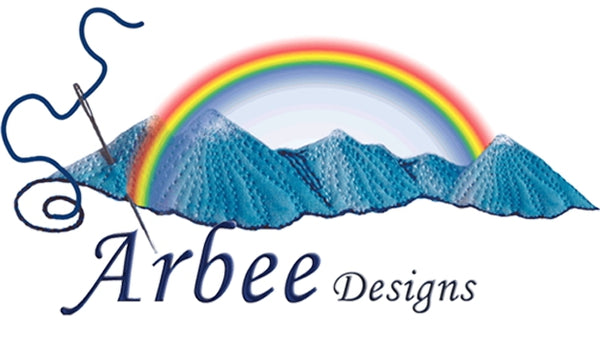If you have are a regular reader, then you will know that I've been updating some of my tutorials and free lessons on my website. Sometimes I have others write tutorials for me, but usually I write them myself. Today is no exception and today's post is all about design walls, why we use them and how to make one. Did you know they can come in all shapes and sizes?
My lesson in the tutorial section answers the following questions: (I've added links to each question)
- Is a design wall only for a designer?
- Why do quilters use these?
- How much does a design wall cost?
- What if I don’t have enough room for a design wall?
- How do you make a design wall?
And today, I thought I'd show you some of the design walls I use and how I made them.
Block Board

This is great for make blocks - especially those first blocks of a pattern when you are still getting familiar with the layout and fabric choices. I used a piece of cardboard and glued thin batting to it. You could use flannel if you prefer. I cut the batting and cardboard the same size and used spray adhesive to attach them together. The cardboard gives the batting stability so I can easily move it from my cutting out table to my sewing machine.
I took this idea one step further by using the lid of a small box. It works great as I can store the ready made block in it and I can easily stand it on end to view too.

Polystyrene Board
I read about these recently and since I had some from packing around an appliance I'd just purchased, decided it might be a good idea to try. Polystyrene can be messy so it is always good to cover it in cling wrap. I could also add batting if I want, but for this board I simply want to use pins to attach my pieces of crochet, but the whole concept can be used for patchwork too!

A Larger Design Wall
I purchased a sheet of plywood (cork board or hardwood also works) from a hardware store. If you have a favorite store, ask them to cut it to size if you need to - usually they do this for you for free.
I covered the board with a thin cotton batting (you can use flannel or felt too). These coverings will allow your fabric to cling to it so there is less need to pin your pieces in place. When covering, slightly stretch the batting over the front and pin, tape or staple it to the back. Mine is slightly loose in the picture because I used tape as I wanted to easily remove it so I could roll up the pieces in the batting to take with me on travel. I will need to restretch and secure it again after I've removed the pieces. .

You can attach this design wall as a permanent fixture in your sewing room or leave it as is so it is easy to move around. Lean it against a wall, behind the door and even hide it under the bed when not in use. The great thing about being able to move it around is you can adjust the height for your needs and the great thing about it being a fixture is it is always out of the way.... although it can get kind of messy at times!
Roll Up Design Wall
I made one of these recently and found the batting clung to the blind very nicely. I used a very thin cotton batting and of course, the blind got quite thick when I rolled it up, but it worked a treat and something I'll be using a lot since I do not have a dedicated sewing room at the moment.

I then attached it to my quilting frame which was ideal. Mine was a temporary attachment, I'll need to make a quick trip to the hardware store to purchase the ideal support brackets. I can leave it set up, or quickly roll it up and put it away out of sight in an instant. I'm tempted to buy a larger blind for the big quilt I'm working on, but first I'll head to the store to find some support brackets.
What sort of design walls do you have? I'd love to hear about them.



